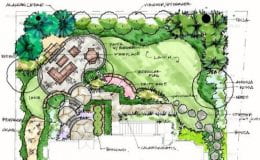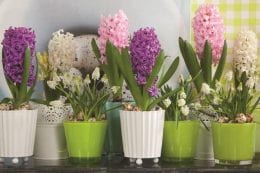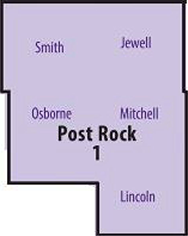Winter is here, and with it comes snow and ice. It’s important to also think about your plants during this season. Make sure to use a de-icer that will not harm your lawn and other landscape plants.
There are five main materials that are used as chemical de-icers: calcium chlori de, sodium chloride (table salt), potassium chloride, urea, and calcium magnesium acetate.
de, sodium chloride (table salt), potassium chloride, urea, and calcium magnesium acetate.
Calcium chloride is the traditional ice-melting product. Though it will melt ice to about -25 degrees F, it will form slippery, slimy surfaces on concrete and other hard surfaces. Plants are not likely to be harmed unless excessive amounts are used.
Rock salt is sodium chloride and is the least expensive material available. It is effective to approximately 12 degrees F, but can damage soils, plants and metals. Potassium chloride can also cause serious plant injury when washed or splashed on foliage. Both calcium chloride and potassium chloride can damage roots of plants.
Urea (carbonyl diamide) is a fertilizer that is sometimes used to melt ice. Though it is only about 10% as corrosive as sodium chloride, it can contaminate ground and surface water with nitrates. Urea is effective to about 21 degrees F.
Calcium magnesium acetate (CMA), a newer product, is made from dolomitic limestone and acetic acid (the principal compound of vinegar). CMA works differently than the other materials in that it does not form a brine-like salt but rather helps prevent snow particles from sticking to each other or the road surface. It has little effect on plant growth or concrete surfaces.
Limited use of any of these products should cause little injury. Problems accumulate when they are used excessively and there is not adequate rainfall to wash or leach the material from the area. Since limited use is recommended it is best to remove the ice and snow by hand when possible. When they are applied, practice moderation. Resist the temptation to over apply just to make sure the ice and snow melts. Keep in mind this can damage concrete surfaces as well as the plants and grass growing along the walks and driveways. These problems are normally latent and do not show up until spring or summer.
By: Cassie Homan
 ot be thinking about your yard in the middle of winter, but January is a great time to design your landscape! Take some time to draw out your existing flower beds, trees, and shrubs. Then decide what you would like to change or add. K-State Research and Extension has some great resource to help with the planning process.
ot be thinking about your yard in the middle of winter, but January is a great time to design your landscape! Take some time to draw out your existing flower beds, trees, and shrubs. Then decide what you would like to change or add. K-State Research and Extension has some great resource to help with the planning process.




